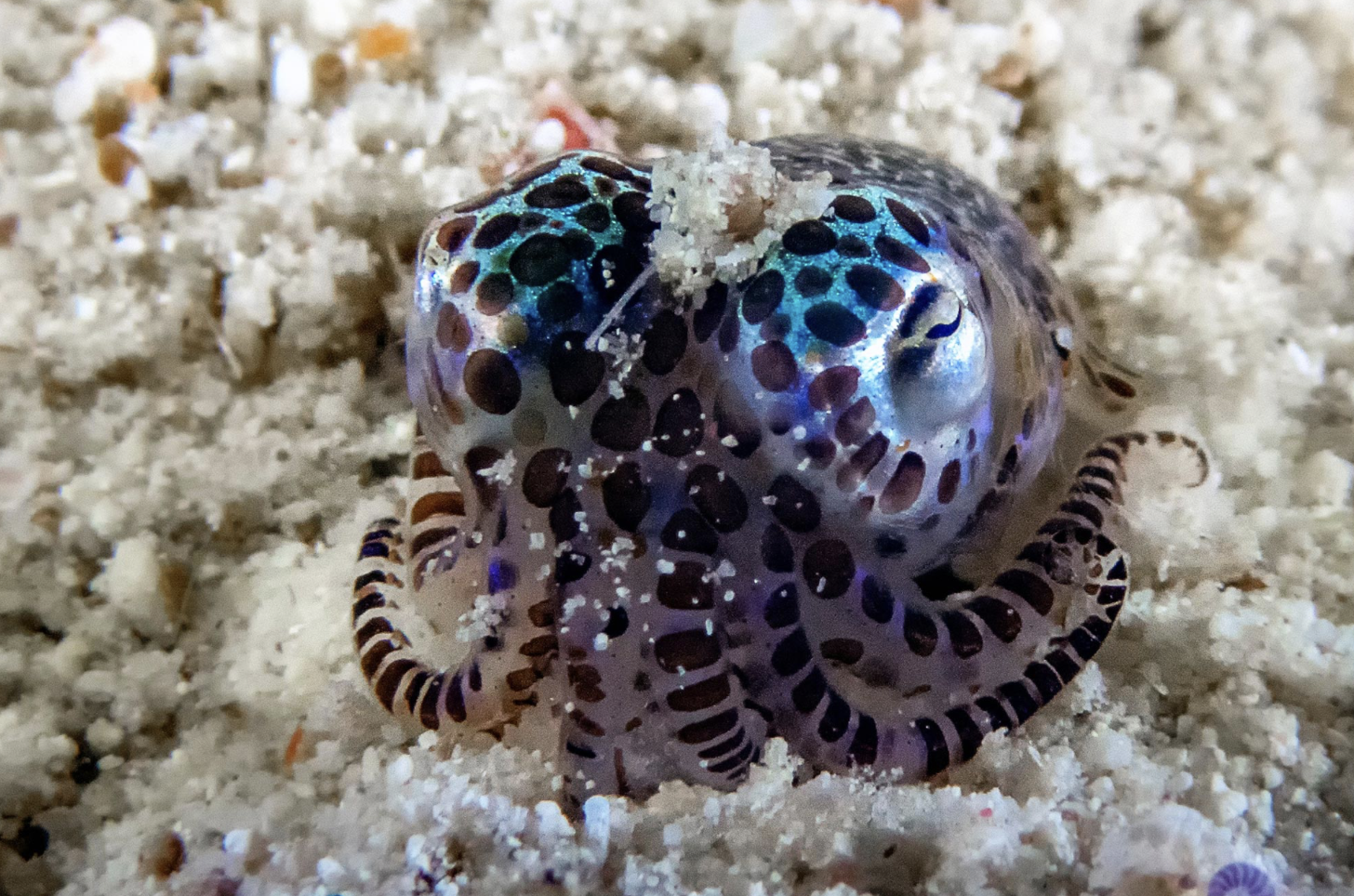A Glowing Friendship: How Vibrio fischeri Lights Up the Bobtail Squid
Squid is a common food in the cuisines of many countries. But have you ever seen this kind of squid in the picture?

The squid in the picture is a tiny bobtail squid (of course it's not found in the cuisines), they are tiny marine invertebrates that are found throughout the world’s oceans. Have you ever wondered why they are blue in colour?
The blue colour appear on bobtail squid are not caused by pigments in their skin, but through forming a mutualistic relationship with a bacteria called Vibrio fischer. Vibrio fischer cells produce and secrete a type of signalling molecule called autoinducer. The autoinducer can diffuse between cells, and binds to a preceptor protein called LuxR in the cytoplasm. When this binding has occured, the LuxR-autoinducer complex binds to the DNA of Vibrio fischer at a position where it introduces the transcription of genes. Expression of these genes results in the production of enzyme luciferase. Luciferase catalyses an oxidation reaction that releases energy. Over 80% of this energy is transformed to greenish-blue light.
In the squid, the bacteria colonise a structure called the light organ. A high population density of the Vibrio fischer inside the light organ leads to a high concentration of autoinducer, bioluminescence is induced, a blue-coloured light is in present.
The light emitted from the squid helps to camouflage it in moonlight, reducing the risk of predation. Together, the bobtail squid and Vibrio fischer showcases beautifully and naturally evolved partnership and teamwork.
